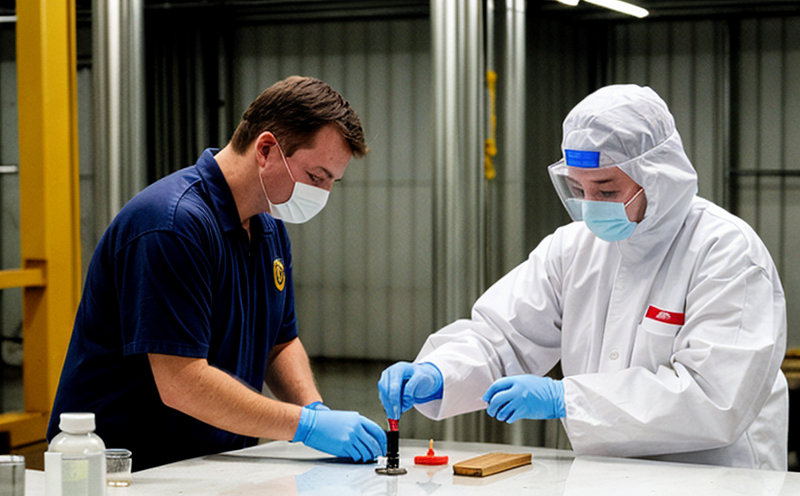ASTM D7386-22 Combined Environmental Resistance
The ASTM D7386-22 Combined Environmental Resistance testing method is a comprehensive approach to evaluate the durability and integrity of packaging materials under real-world conditions. This test simulates environmental factors such as temperature cycling, humidity exposure, and mechanical stress that packaging may encounter during storage, transportation, and end-use.
ASTM D7386-22 ensures that packaging meets stringent quality standards by subjecting it to a combination of thermal, mechanical, and atmospheric conditions. This testing is particularly critical for ensuring the integrity of materials used in food, pharmaceutical, and electronics industries where product contamination or damage can have severe consequences.
The test procedure involves placing specimens within controlled environmental chambers that simulate various temperature ranges and humidity levels. Specimens are subjected to multiple cycles of temperature changes and humidity fluctuations. The goal is to evaluate how the packaging maintains its structural integrity and barrier properties under these conditions.
Testing typically includes:
- Temperature cycling: Simulating variations in ambient temperatures from extreme cold to hot environments.
- Humidity exposure: Assessing the effect of high humidity on materials, which can lead to mold growth or material degradation.
- Mechanical stress testing: Evaluating how packaging withstands physical stresses such as compression and impact during handling and transportation.
The ASTM D7386-22 method is designed to provide reliable data that can be used for quality assurance, product development, and compliance with industry standards. It ensures that the materials used in packaging are robust enough to protect the contents throughout their lifecycle, from manufacturing to end-use.
Understanding the importance of this testing helps ensure that products remain safe and effective under various environmental conditions. Compliance with ASTM D7386-22 is essential for businesses aiming to meet regulatory requirements and maintain consumer trust in product quality.
Industry Applications
The combined environmental resistance test, as specified by ASTM D7386-22, finds extensive use across multiple industries. Food packaging, pharmaceuticals, electronics, and consumer goods sectors all benefit from this testing method to ensure that their products are protected during transportation and storage.
For the food industry, proper packaging is crucial for maintaining product freshness and preventing contamination. The test helps in ensuring that packaging materials can withstand temperature changes without compromising the safety or quality of the contents.
In the pharmaceutical sector, compliance with ASTM D7386-22 ensures that medications are protected from moisture and other environmental factors that could affect their efficacy. This is particularly important for products with a short shelf life or those sensitive to humidity and temperature changes.
The electronics industry also relies on robust packaging to protect components from physical damage during transit and to ensure that the devices function correctly in various environmental conditions. By adhering to ASTM D7386-22, manufacturers can ensure their products meet strict quality standards.
Consumer goods companies use this testing method to ensure that their products are packaged in a way that enhances brand reputation and customer satisfaction. It also helps them comply with international standards and regulations, which is essential for global market access.
Quality and Reliability Assurance
The ASTM D7386-22 test plays a vital role in quality assurance by ensuring that packaging materials meet specific performance criteria under various environmental conditions. This includes evaluating the mechanical strength, barrier properties, and chemical resistance of the material.
- Barrier Properties: The test assesses how well the packaging prevents contamination or degradation due to moisture, oxygen, light, or other agents that could affect product integrity.
- Mechanical Strength: This aspect evaluates the packaging's ability to withstand physical stresses such as compression and impact. It ensures that the material can maintain its structural integrity during handling and transportation.
- Chemical Resistance: The test checks how resistant the packaging is to chemicals, solvents, or other substances that could interact with the material and affect its performance.
The results of ASTM D7386-22 testing are critical for ensuring that packaging can protect products under various conditions. This includes maintaining product integrity during storage, transportation, and use, which is essential for compliance with industry standards and regulations.
By using this method, companies can enhance their reputation by delivering high-quality products that meet customer expectations and regulatory requirements. The test also provides valuable data for continuous improvement in packaging design and material selection.
Customer Impact and Satisfaction
The impact of ASTM D7386-22 testing on customers is profound, particularly in terms of enhancing product quality and reliability. By ensuring that packaging materials meet the stringent requirements of this test, businesses can significantly improve customer satisfaction and trust.
Customers expect products to be safe, effective, and free from any issues related to poor packaging. ASTM D7386-22 testing helps manufacturers deliver on these expectations by providing reliable data on how well their packaging performs under various environmental conditions.
For food and pharmaceutical companies, this means ensuring that products remain fresh, safe, and efficacious throughout their shelf life. In the electronics industry, it ensures that devices function correctly in diverse environments, reducing the risk of malfunctions or failures.
The test also contributes to brand reputation by demonstrating a commitment to quality and customer satisfaction. By adhering to ASTM D7386-22 standards, companies can differentiate themselves from competitors who may not offer the same level of product protection.
Ultimately, this testing method helps businesses build long-term relationships with customers, ensuring that they continue to trust in their products' quality and reliability. It also opens doors to new markets by meeting regulatory requirements and international standards.





